The Economics and Statistics Division maintains archives of previous publications for accountability purposes, but makes no updates to keep these documents current with the latest data revisions from Statistics Canada. As a result, information in older documents may not be accurate. Please exercise caution when referring to older documents. For the latest information and historical data, please contact the individual listed to the right.
<--- Return to Archive
For additional information relating to this article, please contact:
June 13, 2022CANADA NATIONAL BALANCE SHEET ACCOUNTS, Q1 2022 
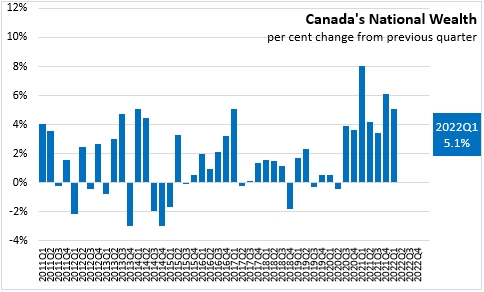
In the first quarter of 2022, Canadian national wealth increased 5.1% (or +$793.3 billion) to $16,440.6 billion. This follows a revised increase of 6.1% in the fourth quarter of 2021. Growth in value of residential real estate and natural resource assets was offset by a contraction in Canada's net foreign asset position that was mostly attributable to falling equity prices.
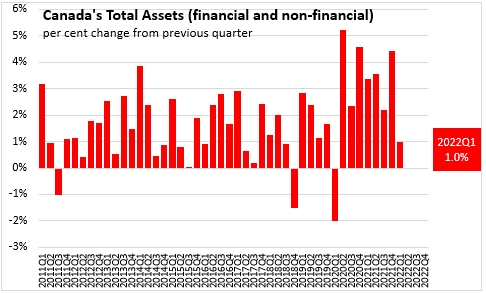
Total assets, including financial and non-financial assets increased by 1.0% to $59,659.9 billion at the end of Q1 2022, following a 4.4% increase in Q4 2021.
Household sector
In Q1 2022, Canada’s household sector net worth increased $194.7 billion to $16,191.7 billion on the continued appreciation of housing. The value of household financial assets decreased (-1.0%) for the first time since Q1 2020 on falling debt securities, foreign equities, mutual fund shares and life insurance/pension funds. Financial liabilities increased $35 billion on continued expansion of outstanding mortgage debt. These were more than offset by increases in the value of non-financial assets. The value of residential real estate grew 3.9% in Q1 2022, largely attributable to ongoing growth in the value of residential land and structures. Real estate assets as a percentage of disposable income continue to increase to 583.7% at the end of Q1 2022 (up from 509.4% at the end of Q1 2021).
Household credit market debt as a proportion of household disposable income fell to 182.47 in Q1 2022.

In Q1 2022, household debt payments fell to 13.48% of disposable income.

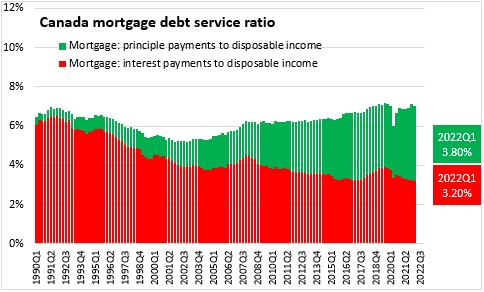
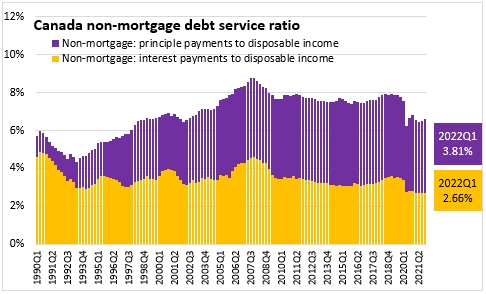
Government sector
At the end of Q1 2022, general government net debt (book value) declined again to 43.1% of GDP. The federal government's net debt to GDP ratio decreased to 36.46%. Net debt of other levels of government decreased to 22.78% of GDP.
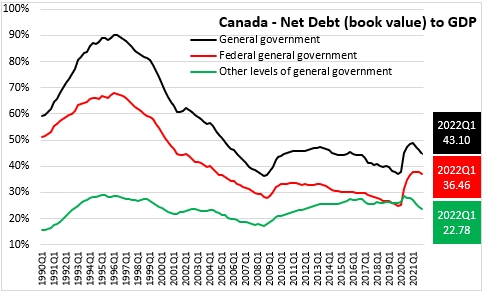
Corporate sector
The credit market debt to equity ratio of non-financial private corporations decreased to 56.48 cents of credit market debt for every dollar of equity in Q1 2022, down from 57.08 cents (revised) in Q4 2021.
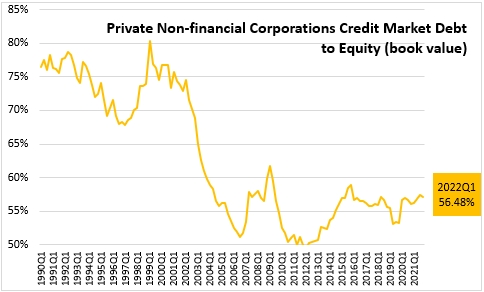
Source: Statistics Canada. Table 11-10-0065-01 Debt service indicators of households, national balance sheet accounts; Table 36-10-0580-01 National Balance Sheet Accounts (x 1,000,000); Table 38-10-0235-01 Financial indicators of households and non-profit institutions serving households, national balance sheet accounts; Table 38-10-0236-01 Financial indicators of corporate sector, national balance sheet accounts; Table 38-10-0237-01 Financial indicators of general government sector, national balance sheet accounts; Table 38-10-0238-01 Household sector credit market summary table, seasonally adjusted estimates
<--- Return to Archive